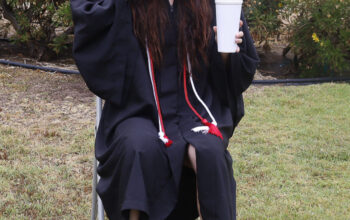Just on principle by itself, free college wouldn’t benefit society, school systems or the students. It’s what the ancient Greeks would call a siren song by politicians asking you for their vote. For those unfamiliar, it refers to “The Odyssey,” in which the hero came across the sirens, fair maidens of the sea who used their beautiful voices to entice sailors to sail their ships into jagged rocks to drown them.
To add credence to Milton Friedman’s saying, “There is no such thing as a free lunch,” the financial burden would instead fall on the taxpayers to pay the expenses. This includes graduating students and their children.
What would be the catastrophic consequences? Students lose the incentive to economize, as would the colleges, as George Leef explained in his article, “Why ‘Free College’ is a Terrible Idea.” Former Harvard University president Derek Bok said his fellow presidents “share a common trait with gambling addicts and exiled royalty—there is never enough money.”
With no fear of losing students because of high tuition or fees, “the only remaining constraint on their spending would be how much money they can wheedle out of Uncle Sam.” It’s troubling, considering how bleak many Americans feel about the economy.
New York Federal Reserve economist Aysegul Sahin noted in his paper “The Incentive Effects of Higher Education Subsidies on Student Effort,” that people purportedly put little time or assiduous effort into whatever they receive for free as much as they would do for things they invest their money into. Effort levels would be on the downturn.
A study, “The Falling Time Cost of College,” documented how time investment by full-time students decreased from 40 hours per week in a 1961 class to 27 hours per week in a class set in 2003. The authors didn’t attribute the decline to changes in significant choices or changes in student composition. Instead, they observed “substantial changes over time in the quantity or manner of human capital production in college campuses.”
Some European countries, including England, experimented with free community college for decades and the results do not promise high confidence with the practice. Enrollments soared in the UK, but as government revenues started to strain, schools had to set a cap on the number of students admitted. Other countries saw decreases in degree completion.
California already faces a $58 billion deficit, and more people are voicing their concerns over taxation and bureaucratic regulation. State residents have been leaving in significant droves, enough to cost one seat in Congress. And taxpayers will continue to pay the burden should any proposition for free college be pursued, regardless of how enticing the politicians in Sacramento make it to be.
It’s not just an economic problem but a generational one, particularly for millennials. According to a study published in the Hill, researchers have noticed troubling trends in contrast to the baby boom generation. For example, “17 percent of the boomers were able to secure prestigious career paths after graduating from college,” compared to about 7 percent of millennials. Only 49 percent of millennials were able to own their own home by the age of 35, compared to 62 percent of boomers. This reinforces the latters’ general notoriety as the pampered, everyone-deserves-a-trophy generation.
These troubling trends must worry parents whether college students truly will be able to soar into the real world where self-responsibility is in short supply.
Multiple programs and grants exist that students can take advantage of if they struggle with their finances, including the California College Promise Program. This program was originally the Board of Governors Fee Waiver, which was passed in 1985 to waive application and enrollment fees for low-income students.
Heritage Foundation’s Mary Clare Amselem proposed one simple solution back in 2019. Instead of selling free college as a throwaway campaign promise, “policymakers should encourage competition and innovation by reducing regulatory burdens for streamlined educational alternatives.”


